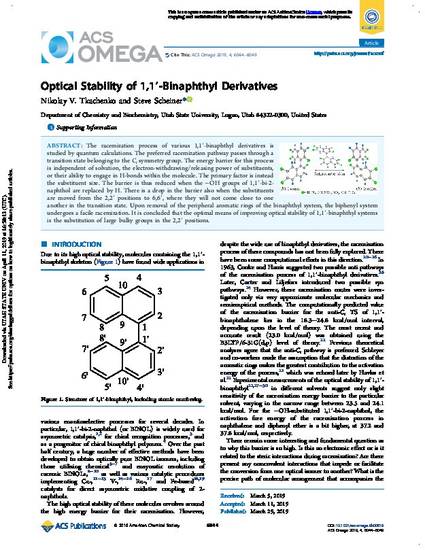
The racemization process of various 1,1′-binaphthyl derivatives is studied by quantum calculations. The preferred racemization pathway passes through a transition state belonging to the Ci symmetry group. The energy barrier for this process is independent of solvation, the electron-withdrawing/releasing power of substituents, or their ability to engage in H-bonds within the molecule. The primary factor is instead the substituent size. The barrier is thus reduced when the −OH groups of 1,1′-bi-2-naphthol are replaced by H. There is a drop in the barrier also when the substituents are moved from the 2,2′ positions to 6,6′, where they will not come close to one another in the transition state. Upon removal of the peripheral aromatic rings of the binaphthyl system, the biphenyl system undergoes a facile racemization. It is concluded that the optimal means of improving optical stability of 1,1′-binaphthyl systems is the substitution of large bulky groups in the 2,2′ positions.
